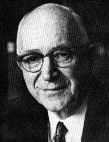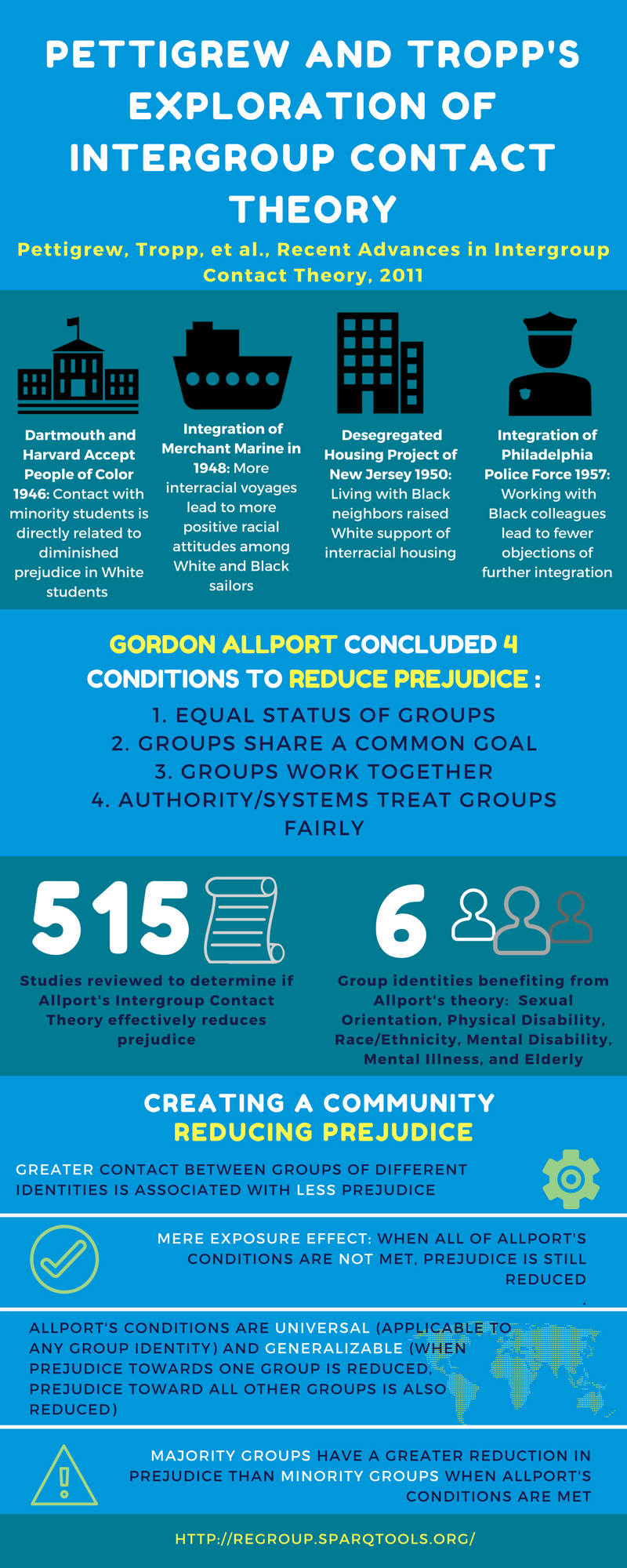Research

The research behind Re-Group and Intergroup Contact Theory
The Problem?
People from different groups often have bad attitudes toward each other.
The Solution?
Merely spending time together improves people’s attitudes toward each other. Prejudices lessen even more when groups cooperate as equals toward a common goal.
Background
To test the idea that mere contact between people with different races, sexual orientations, abilities, and other backgrounds reduces prejudice, social psychologists Thomas Pettigrew and Linda Tropp first gathered 515 studies that had tested this so-called intergroup contact theory. The researchers then combined these studies into one large statistical test known as a meta-analysis, which allowed them to harness the strength of many smaller studies into one large one. Their meta-analysis included studies from six continents, conducted as early as 1940 and as recently as 2000, using methods that included laboratory experiments, surveys, and field studies.
Pettigrew and Tropp found that merely spending time together improves groups’ attitudes towards each other. Even more surprising, they discovered that the good feelings that arise from intergroup contact extend to other groups as well. In other words, if you are a White person who has been spending time with a Black person, you are likely to have better feelings about gay people and Middle Easterners as a result.
Why Does This Work?
People often fear what they do not know or understand. By spending time with others from different social groups, people lose their fear towards different others. As their fear lessens, their attitudes improve.
When Does this Work Best?

Dr. Gordon Allport
Not all intergroup contact is equally beneficial. Pettigrew and Tropp also tested legendary psychologist Gordon Allport’s ideas about what kinds of intergroup contact reduce bad feelings the most. Allport presented these ideas in his 1954 classic, The Nature of Prejudice. The researchers confirmed that the following four conditions produce the best intergroup relations:
1) The groups have equal status in the situation;
2) The groups share a common goal;
3) The groups are cooperating, rather than competing;
4) Laws, customs, or people in authority support the interaction.
Four early examples of integration that helped lead to Allport’s Intergroup Contact Theory

Universities Accept People of Color 1946

Integration of the Merchant Marine 1948

Desegregation of Housing in New Jersey 1950

Integration of Philadelphia Police Force 1957
 Download this fun poster to help remember Intergroup Contact Theory and Allport’s Conditions for optimal prejudice reduction.
Download this fun poster to help remember Intergroup Contact Theory and Allport’s Conditions for optimal prejudice reduction.
Original Paper Pettigrew, T. F., & Tropp, L. R. (2006). A meta-analytic test of intergroup contact theory. Journal of Personality and Social Psychology, 90(5), 751. See Also Allport, G. W. (1954). The Nature of Prejudice. New York: Basic Books.
